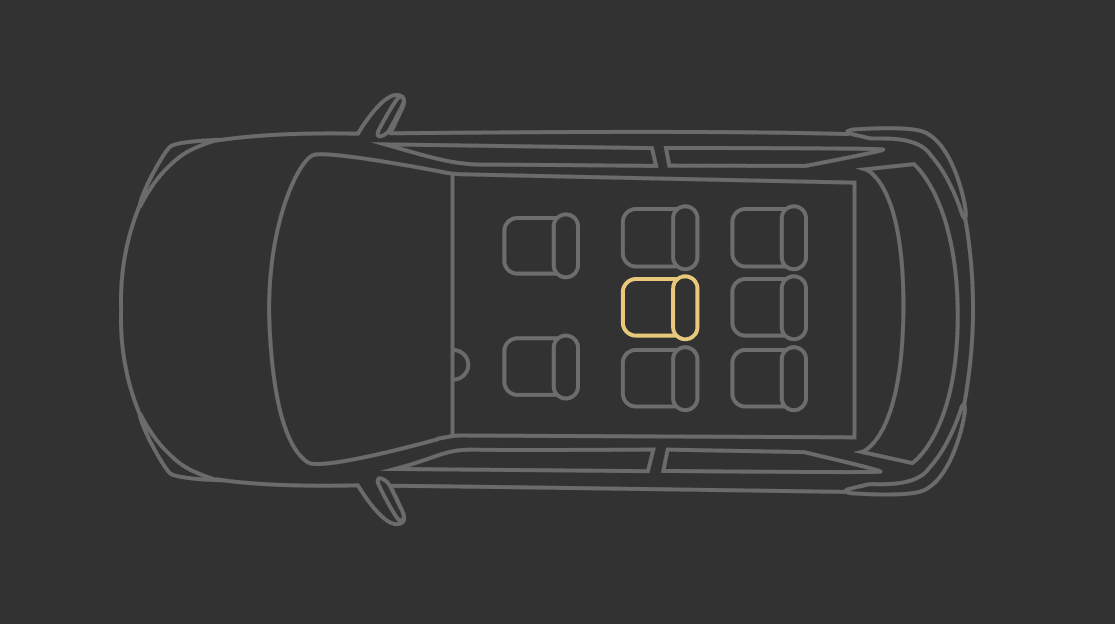
Which car seat is the safest one?
We often tend to say thatin the past there were not so many cars on the roads, so accidents happened less frequently. However, police statistics clearly indicate that for children, these road traffic events are most often fatal mainly due to the fact that they are transported in an incorrect manner. Today we are more often thinking about how to keep children safe in the car and which seat is the safest one. It is good to be well informed in that respect in order to place the whole family wisely in the car.

Contents:
- How does the research evaluate the safety of specific seats in the car?
- Is the rear seat behind the driver the safest?
- Which seat in the car is the safest for children?
- Which seat in the car has been considered the safest?
How does the research evaluate the safety of specific seats in the car?
The Insurance Institute for Highway Safety is an institution which in 2019 conducted a study on what causes greater injuries or death to rear seat passengers. The results were surprising since until now we thought that the rear seat was the safest one in the car. After all, the majority of serious road accidents involve the front of the car, sometimes also the side parts.
However, the safety rating has been primarily influenced by technological advances. In the rear seats, not much has changed in terms of safety over the past decade. In contrast, the situation for the front passenger seat has changed drastically. The number of safety systems, airbags and any other reinforcements indicates that the front passenger seat is the safest place in the car for adults.
Is the rear seat behind the driver the safest?
For a long time, it was the seat behind the driver that people considered the safest place in the car. Most often, this was based on the belief that the driver would instinctively steer a possible collision in such a way as to minimise the risk to themselves.
However, this idea is not without flaws. First of all, certain traffic accidents happen so quickly that the driver has no time to react. So it is difficult to speak of any conscious action on their part. In addition, the rear seat is a place where – unfortunately – we sometimes allow ourselves not to wear seat belts. This is a huge mistake. The moment, when the head hits the front seat, can lead to a tragedy, and it will be even worse if the rear passenger suffers a massive impact and is thrown through the windscreen. There is a high probability that it will also harm the front seat passengers.
So if there is no need for an adult to sit in the back, they should choose the seat next to the driver. In an emergency, they will be protected by the modern technology and safety features provided by the car manufacturer.
Which seat in the car is the safest for children?
The IIHS research may cause many parents to worry, especially if they drive their children in the back seat which, as it turns out, is not safer at all. Fortunately, you do not have to pull your hair out – children should sit right at the back as they have their dedicated safety seats there. Their role is to effectively replace those safety systems that adults have up front.
The car seat will protect the head of your child from hitting the side window, and the point seat belts will prevent the tiny body from moving out of the seat. In addition – when it comes to rear-facing seats and head-on collisions – their spine is also safe. So you can transport your children in the car on the back seat without worrying. As long as you use proper child seats, the safest place for them is in the back seat.
Which seat in the car has been considered the safest?
The study also takes into account the distance from potential car damage during a traffic accident. And here it undoubtedly turns out that the least damaged part of the car cabin is usually the place exactly in the middle, i.e. the middle rear seat. So as long as there is an ISOFIX or a standard seat belt in your car, you can put your child in the safety seat without any worries.
The second best choice is the seat behind the front passenger. If you have to make an unexpected pull back, approach your child from the safe side, not from the busy road.
If an adult chooses to travel in the middle rear seat, it is extremely important that they wear their seat belt properly. This will affect their own safety, but also the safety of other passengers.
Although the safest place in the car is in the middle of the back seat, you can contribute to travel safety for your whole family if everyone takes a reasonable approach. Always use seat belts and carry children in high-quality safety seats. Sometimes a second of inattention is enough for something bad to happen. If everyone follows the safety rules, the dangerous consequences of road events can be kept to a minimum.



